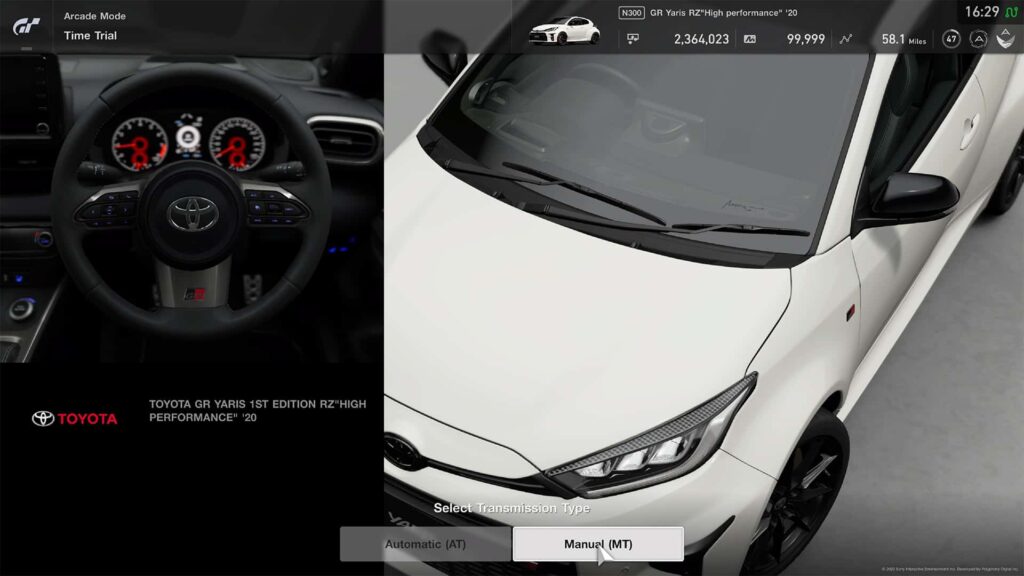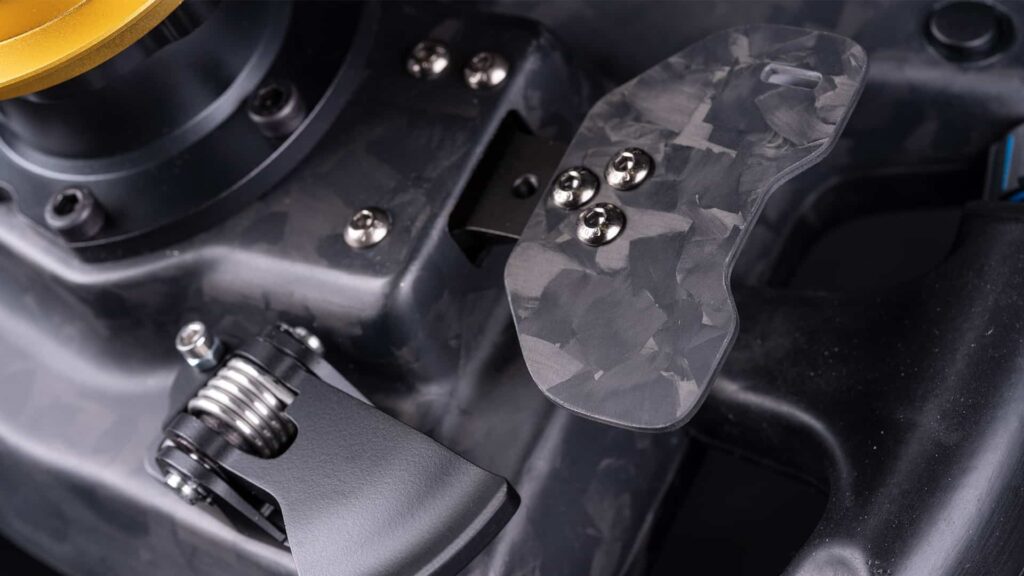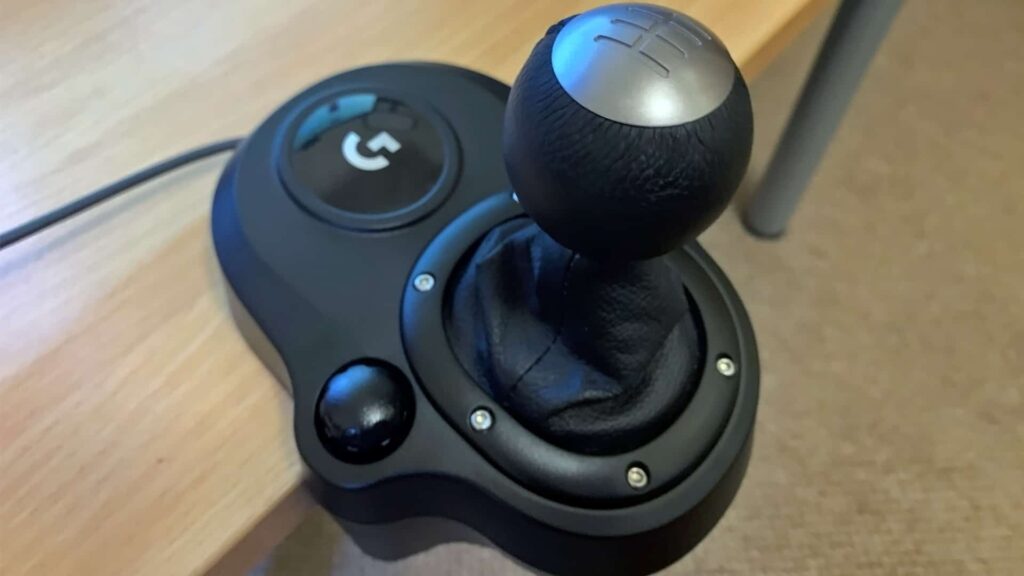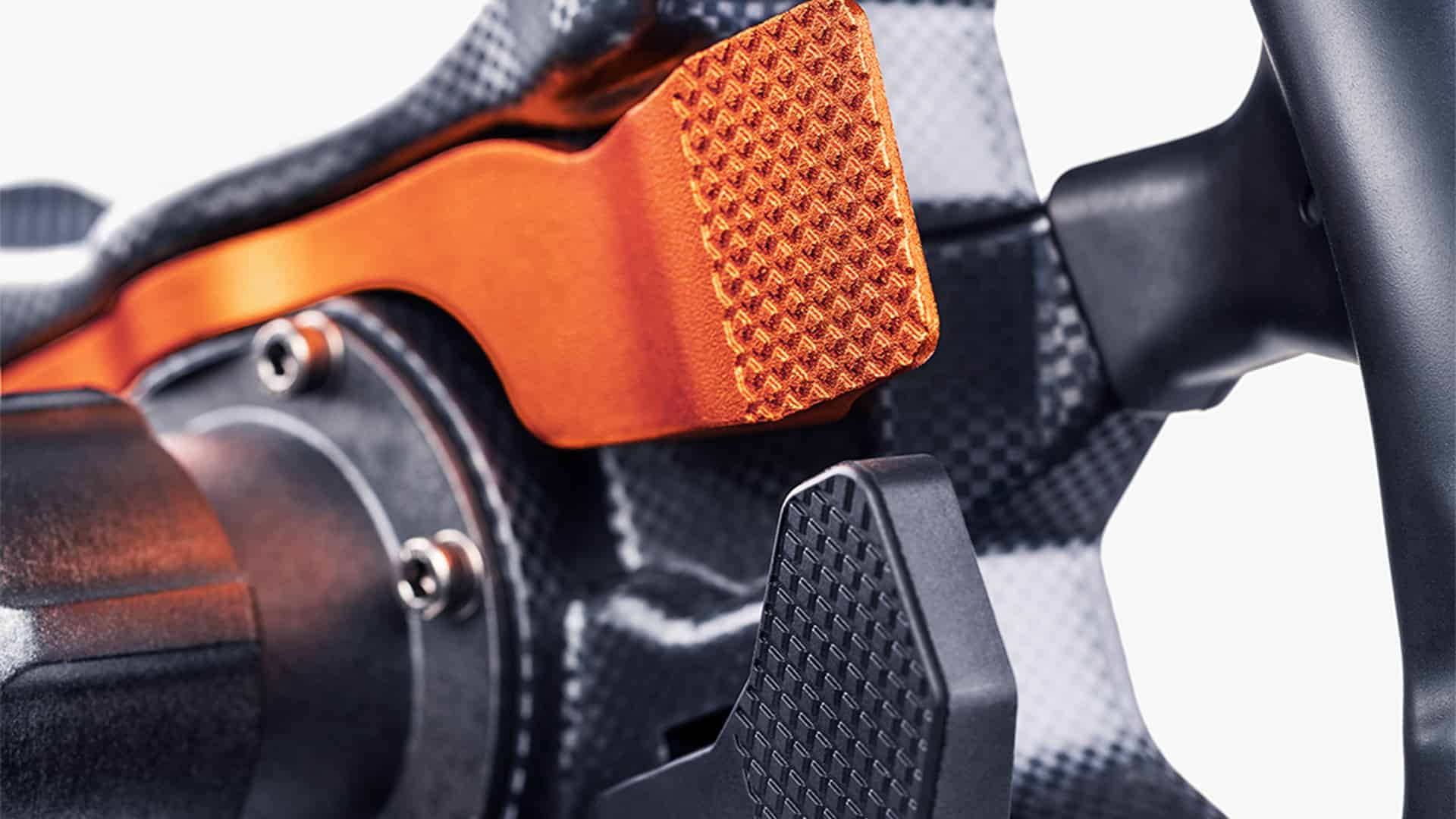When you start out playing racing games, the ‘Manual Gears’ option looks pretty scary and frankly, you can’t imagine anyone deliberately choosing to make things so difficult for themselves. But truthfully the old Pirelli slogan is spot-on: Power is nothing without control.
If the engine was just attached directly to the back wheels, the car would be undriveable, either spinning the wheels wildly as soon as it was switched on, leaving all your fresh rubber on the start line, or seeing you stall like a noob because the engine can’t physically move the bulk of the car as quickly as the engine is turning.
Most electric cars don’t need gears (they work differently), but cars with internal combustion engines do. So whether you select automatic or manual, gears are still being changed; it’s just that ‘Automatic Gears’ do the switching on your behalf and you only need to focus on the accelerator and brake pedals. The ‘Manual Gears’ option, however, allows you to unlock the full power of your engine, whichever way you choose to use it.
So let’s look at exactly how that works and why you’ll be faster if you learn to use them properly.

1: You’ll have a magic grip button
When the car is standing still, the engine is at its most powerful in first gear. In a road car, you can pull away in second gear and even third if you give it enough revs, but first gear is designed to get the car moving. In a racing car, the same applies, though in a race you might return to first gear for a very tight hairpin, which you wouldn’t normally do on a flat road in a road car.
If the track is a bit slippery, or especially if you’re racing in the rain, clumsy use of the accelerator can make you spin on the exit of corners. That’s because the engine’s power is transferred to the wheels too quickly, causing them to break traction and spin. And spinning wheels on a wet track have the same effect as an ice skate – your car is sliding over the surface, and so the car spins.
With manual gears, you can simply choose the next gear up, which takes away some of that raw power (known as torque), affording you a bit more play on the throttle. If you floor the accelerator, you’re still likely to spin the wheels, but you’d have to be really ham-fisted (or rather ham-footed) to do that.
It’s also sad to say but some racing games only let you turn the wheel sharply enough for some corners when you’re in the lowest gears. So just getting the car down one more gear can increase your turning angle. Automatic gears takes that option out of your hands.
2: You’ll find more consistency in your cornering speed
Contrary to the apparent ethos of many online racers, slowing down for the corners is the best way to get around them faster. But how much should you slow down?
Well, using manual gears gives you an easy way to remember how fast you can comfortably take each corner. If you know there’s a hairpin coming at the end of the straight, give yourself time to shift down into 2nd and the corner becomes easy when you actually drive around it.
Learn which gear is best for which corner and you’ll start to develop a rhythm and your lap times will plummet. Couple this with a mental note to remember your ideal braking point for each corner and you’ll start to be able to post near-identical lap times on demand.

3: You’ll save fuel
Like it or not (and most don’t), fuel management is a big part of the tactical race plan in many motorsport categories. Modern racing cars gain time by running in an under-fueled state, saving seconds by running lighter by putting less fuel in, knowing that fuel-saving will be needed before the race ends in order to make it to the finish line.
‘Short shifting’ is a big part of this, which means changing up gears earlier than normal, to keep the engine revolving at a lower rate, therefore using less fuel. It’s not the fastest way to tackle the track and you’d never do this in qualifying unless you were struggling for grip as mentioned before. But lower revs means less fuel used, and only manual gears will let you control that properly.
4: You’ll get better acceleration
Even in the middle gears where wheelspin isn’t so much of an issue, manual gears make a huge difference to how well your car gains speed. The engine normally accelerates faster when it’s near the middle to upper-end of the rev counter, so shifting down can put the needle right back into the sweet spot. If you skid through a corner by taking it too quickly, or your engine just isn’t particularly powerful, you may find the engine note drops on the exit of corners, feeling like you’re stuck in the proverbial doldrums.
With automatic gears, the game may not actually choose to drop down another gear to sort the problem out, meaning several seconds of laboured acceleration and tenths lost compared to your rivals. Having the option to shift down momentarily can make a big difference to your acceleration out of the same corner. If you’re heading onto a long straight this can make a significant chunk of time up. The only thing to consider is that the act of actually changing gear itself takes time, during which the engine is disconnected from the wheels, so whether it’s worth losing time to gain a few tenths back before you shift again is something you need to consider as you start to master your lap.

So how do I actually do the gears?
So you’re convinced? Excellent. Thankfully the art of gear shifting is quite simple to learn, especially in racing games where it’s a real hardcore setting to actually want to use a clutch pedal. Instead, most games simply have a gear up and gear down button.
On the screen you’ll see a rev counter which doesn’t mean how fast you’re going; it’s actually how fast the engine is going. So start in first gear and apply the accelerator. The car will move and the rev counter will go up. Just before it reaches the red zone, push the ‘gear up’ button, lever, or if you’re using a stick shift, change to ‘Gear 2’. The rev counter will fall but your speed will stay the same. Keep accelerating and it will rise again. Keep changing up as it hits the yellow or red zone and you’ll soon be flying along. Once in top gear, you’ll eventually hit the car’s maximum speed.
To slow down, reverse the process. Apply the brakes, and watch the rev counter fall. As it falls and the engine note dives, shift down and the needle will rise sharply along with the engine note, before gently falling again. The idea is to keep the needle in the powerband, using the engine’s power when you want it, and reducing it when you don’t. Try it – you’ll never go back once you’ve got the hang of it.





Chat with the Community
Sign Up To CommentIt's completely Free